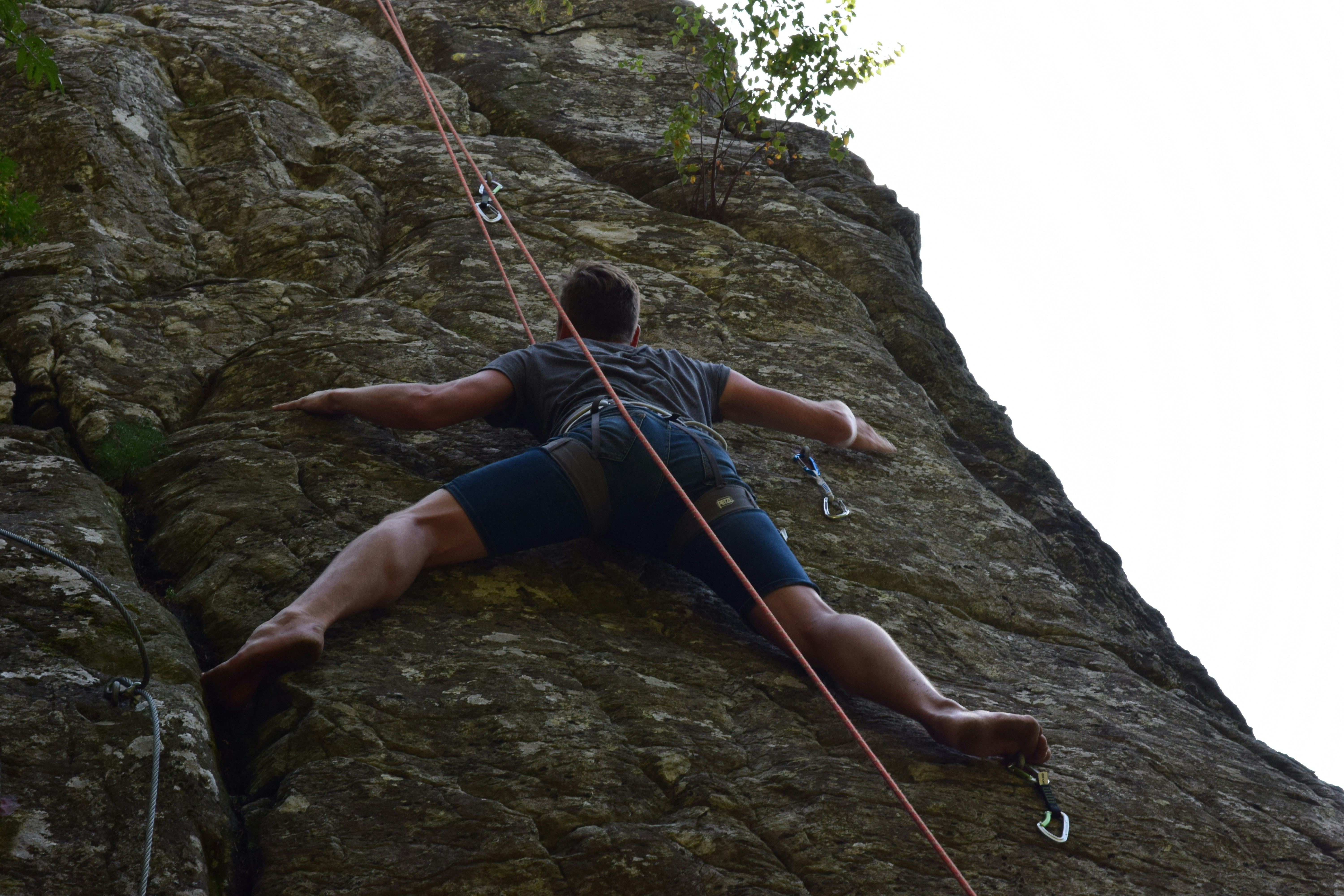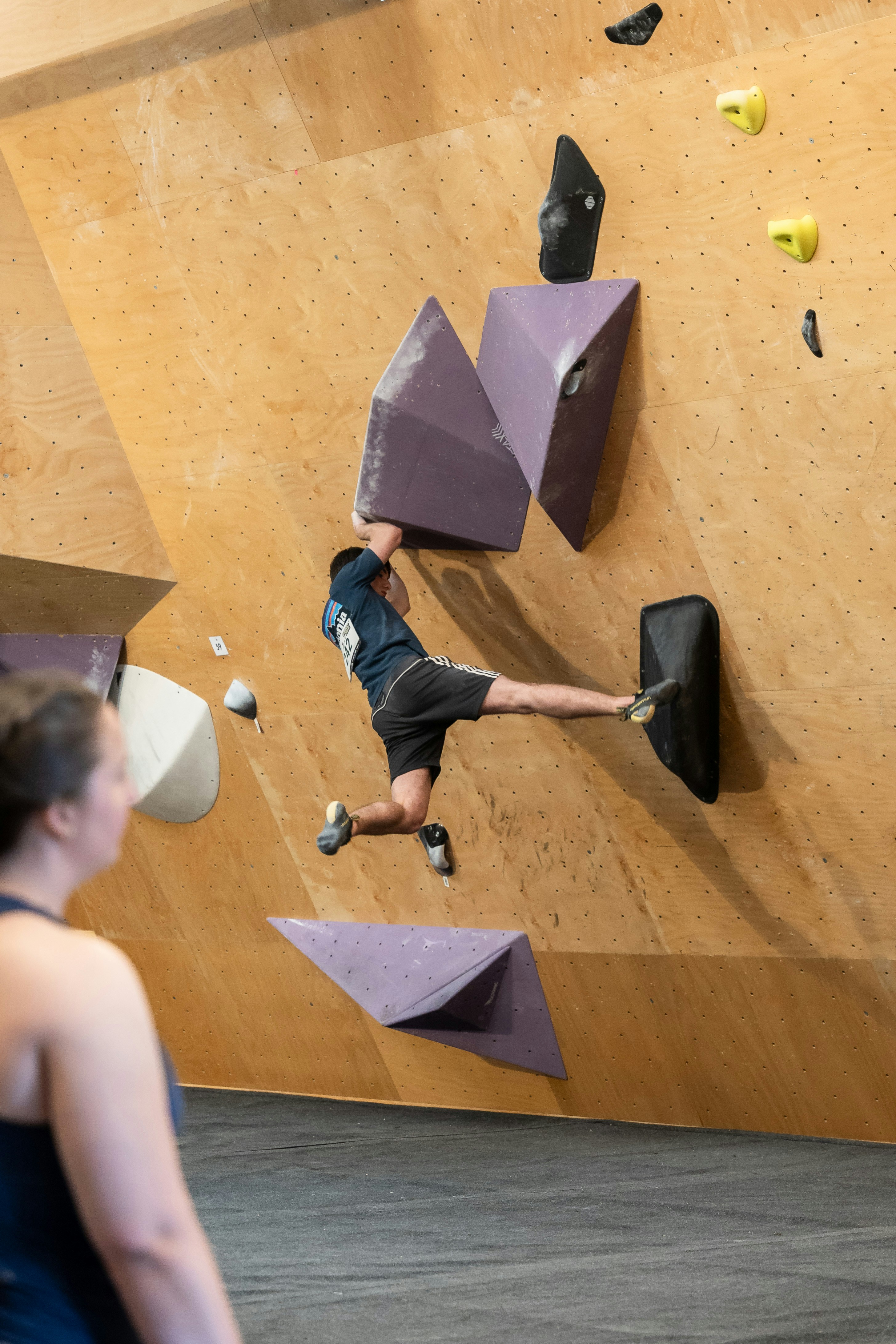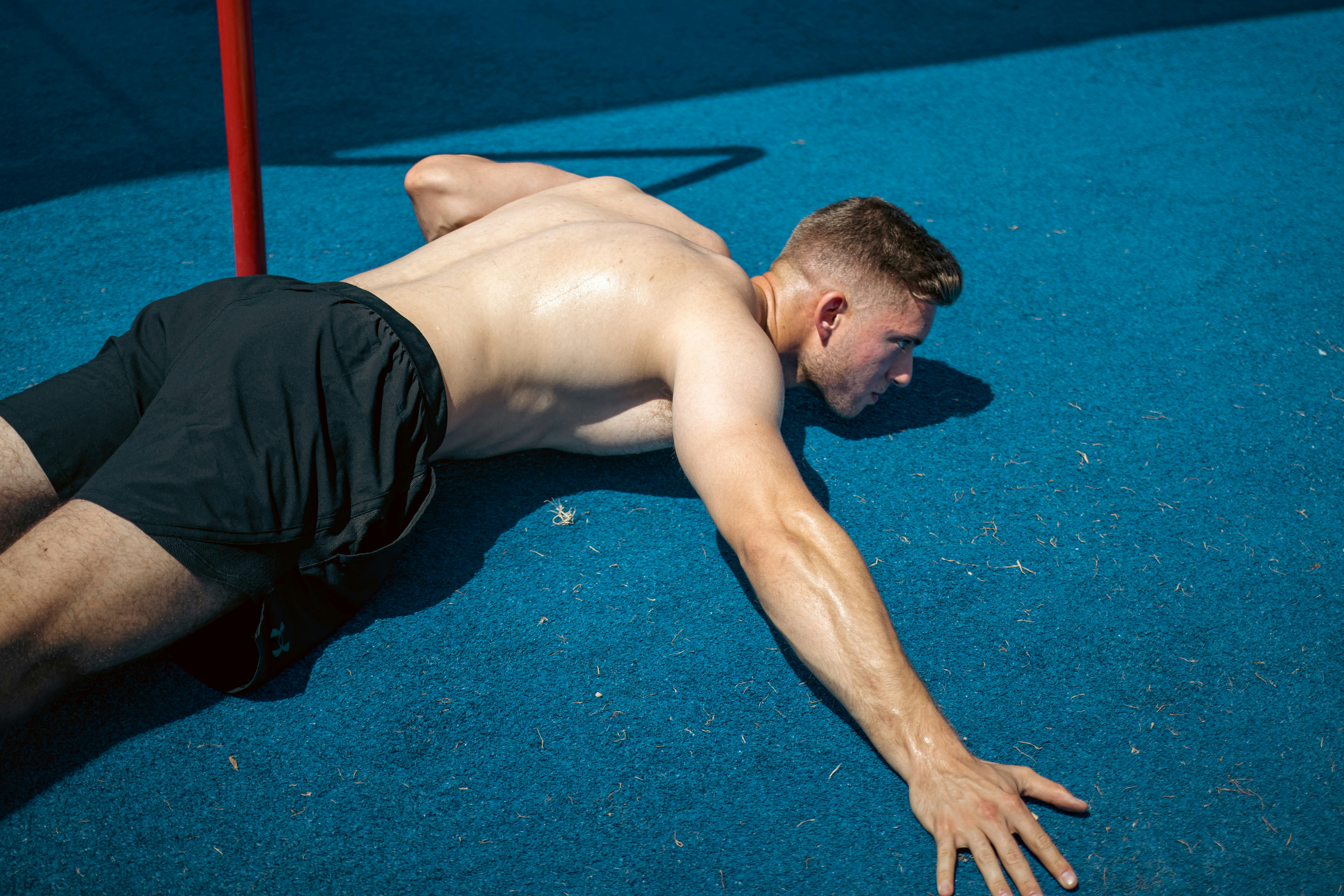You've probably noticed how some climbers seem to peak at exactly the right moments during competition season, while others burn out or plateau when it matters most. The difference isn't just talent or dedication - it's understanding how to structure your strength training in cycles that build upon each other throughout the year.
Periodization might sound like fancy sports science jargon, but it's actually a simple concept with profound implications for your climbing performance. Instead of training the same way year-round, you deliberately vary your training focus, intensity, and volume to peak for specific competitions or goals. Think of it as conducting an orchestra - each section has its role, but the magic happens when everything comes together at the right moment.
Most climbers approach strength training with a "more is better" mentality, hammering themselves with high-intensity sessions week after week. This approach might work for a few months, but it's a recipe for burnout, injury, and frustrating plateaus. Competition climbing demands a more sophisticated approach, one that respects your body's need for adaptation, recovery, and strategic overreaching.
Understanding Climbing-Specific Periodization
Traditional periodization models were designed for single-skill sports like sprinting or powerlifting, but climbing presents unique challenges. We need strength endurance for long routes, explosive power for dynamic moves, and sustained power for bouldering sequences. Plus, technique and mental game play huge roles that need to be integrated into any effective program.
The key insight is that you can't develop all these qualities maximally at the same time. Your nervous system has limited recovery capacity, and trying to peak everything simultaneously leads to mediocre results across the board. Instead, you focus on developing different qualities in sequence, maintaining others while pushing one or two aspects forward.
A well-designed climbing periodization cycle typically spans 12-16 weeks, broken into distinct phases that build upon each other. You start with a foundation phase that builds general strength and addresses weaknesses, progress through a strength phase that develops maximum force production, move into a power phase that converts strength into explosive movement, and culminate in a peak phase where everything comes together for competition performance.
The beauty of this approach is that each phase prepares your body for the next one. The foundation phase creates the structural integrity needed for heavier loads in the strength phase. The strength phase builds the force production capacity that gets converted to power in the next phase. And the power phase develops the explosive qualities you need while maintaining the strength base you've built.
Foundation Phase: Building Your Base
The foundation phase typically lasts 4-6 weeks and serves multiple crucial functions. You're building general strength, addressing imbalances, improving movement quality, and preparing your connective tissues for the more intense work ahead. This isn't the most exciting phase, but it's arguably the most important for long-term development.
Your training volume is moderate to high during this phase, with intensity kept relatively low. Think 3-4 strength sessions per week, focusing on compound movements that build overall strength and stability. Pull-ups, weighted pull-ups, rows, and core work form the foundation. You're also spending time on antagonist training - push-ups, overhead pressing, and lower body work that keeps you balanced and injury-free.
Movement quality takes precedence over load during foundation work. Every rep should be controlled and deliberate. If you're doing pull-ups, focus on the full range of motion, controlled eccentric lowering, and consistent form rather than just cranking out numbers. This attention to detail pays dividends when you move into heavier training phases.
Finger strength maintenance happens during this phase, but it's not the primary focus. You might do some light hangboarding or system board work, but the goal is maintaining what you have rather than pushing new personal bests. Your fingers need time to adapt to training stresses just like your muscles do, and being patient here prevents injury later.
The psychological benefits of foundation training are often overlooked. After a intense competition season or training block, your motivation might be lower, and that's perfectly normal. Foundation work allows you to re-engage with training gradually, rebuild confidence with manageable loads, and mentally prepare for the harder work ahead.
Strength Phase: Building Maximum Force
Once you've established a solid foundation, the strength phase focuses on developing your ability to produce maximum force. This typically lasts 3-4 weeks and represents the most physically demanding portion of your training cycle. Volume decreases while intensity increases significantly, and recovery becomes critically important.
Your strength training becomes much more climbing-specific during this phase. Weighted pull-ups with additional load, campus board power development, and serious hangboard protocols take center stage. You might be working with loads that represent 85-95% of your maximum effort, which requires excellent recovery between sessions.
This is where many climbers make mistakes by trying to maintain their normal climbing volume alongside increased strength training intensity. Something has to give, and it should be your recreational climbing volume, not your recovery time. You might drop from five climbing sessions per week to three, focusing those sessions on movement practice and technique rather than exhausting yourself on hard projects.
Finger strength development accelerates during this phase, but it requires careful progression. You might move from basic hangs to weighted hangs, or from larger holds to smaller edges. The key is progressive overload - gradually increasing the stress on your system in measurable ways. Keep detailed records of your training loads because small improvements in finger strength translate to significant climbing performance gains.
Rest periods between strength exercises become longer during this phase. Where you might have rested 2-3 minutes between sets in the foundation phase, you now need 3-5 minutes to allow your nervous system to recover fully between maximum efforts. This isn't laziness - it's strategic recovery that allows you to maintain training quality.
Power Phase: Converting Strength to Movement
The power phase bridges the gap between raw strength and climbing-specific movement. You've built the engine in previous phases; now you're learning to use it efficiently for dynamic climbing moves. This phase typically lasts 2-3 weeks and focuses on explosive movements and movement quality under fatigue.
Training intensity remains high, but the nature of the work changes. Instead of maximum load hangs, you might focus on explosive pull-ups or campus board power sequences. Rather than grinding through weighted pull-ups, you're working on dynamic movements that translate directly to climbing performance. The load decreases, but the intent to move explosively increases.
Plyometric exercises become more prominent during this phase. Explosive push-ups, jump training, and dynamic core work help develop the elastic qualities that make powerful climbing moves possible. The goal isn't just to be strong, but to apply that strength quickly and efficiently in climbing-specific movement patterns.
Your on-wall training becomes more focused during this phase. Instead of working projects to failure, you might focus on perfect execution of powerful sequences. Quality over quantity becomes the mantra. You want to practice applying your newly developed strength in controlled, repeatable ways that build confidence and movement precision.
Recovery monitoring becomes crucial during the power phase because you're asking your nervous system to work at high intensity while still recovering from the strength phase. Sleep quality, resting heart rate, and subjective energy levels all become important metrics for determining whether you're adapting positively to the training stress.
Technique refinement often accelerates during this phase because you have more strength available to execute moves cleanly. Sequences that felt desperate and sketchy suddenly become controlled and repeatable. This is where the magic of periodization becomes apparent - each phase prepares you for breakthrough moments in subsequent phases.
Peak Phase: Competition Readiness
The peak phase is where everything comes together. Training volume drops significantly while maintaining the strength and power qualities you've developed. The focus shifts to competition-specific skills, mental preparation, and ensuring you arrive at competitions feeling fresh and confident rather than tired and overtrained.
Most climbers get the peak phase wrong by trying to cram in last-minute improvements. The reality is that significant strength or power gains take weeks to develop, and you can't make up for inadequate preparation in the final days before competition. The peak phase is about expressing the fitness you've already built, not building new fitness.
Your training becomes highly specific to competition demands. If you're preparing for bouldering competitions, your sessions might involve multiple short, powerful problems with competition-style rest periods. For lead climbing, you practice sustained efforts on progressively difficult terrain. The goal is rehearsing the specific energy systems and movement patterns you'll need on competition day.
Mental preparation becomes as important as physical training during this phase. Competition-specific visualization, routine development, and stress management techniques take precedence. You might spend time practicing your pre-climb routine, working with simulated competition pressure, or developing strategies for handling unexpected challenges.
Recovery protocols become more sophisticated during peaking. You might incorporate massage, contrast baths, or other recovery modalities that help you feel fresh. Sleep becomes non-negotiable, and you eliminate any activities that don't directly contribute to competition readiness. This isn't sustainable long-term, but for short periods, this level of focus can produce remarkable results.
The psychological aspects of peaking are often the most challenging. After months of building fitness, there's a natural temptation to keep pushing harder right up until competition day. Learning to trust your preparation and allow your body to express its fitness requires confidence and experience that develops over multiple training cycles.
Advanced Periodization Strategies
Once you've mastered basic periodization concepts, several advanced strategies can further optimize your competition preparation. Conjugate periodization allows you to work multiple training qualities simultaneously while emphasizing one primary focus. Block periodization uses shorter, more intense training blocks to produce rapid adaptations.
Autoregulation involves adjusting your training based on daily readiness markers rather than following a rigid schedule. If you wake up feeling exceptional, you might push harder than planned. If recovery markers suggest fatigue, you might reduce intensity or volume for that session. This requires experience and honest self-assessment, but it can significantly improve training outcomes.
Competition calendars often don't align perfectly with ideal periodization cycles, so learning to manipulate training phases becomes important. You might compress phases for quick peaks or extend phases when you have more time to develop specific qualities. Advanced competitors often run multiple shorter cycles throughout the year rather than single long buildups.
Monitoring and Adjusting Your Program
Effective periodization requires consistent monitoring of both training loads and adaptive responses. Keep detailed logs of exercises, loads, and subjective feelings. Track objective markers like grip strength, pull-up maximums, or hangboard times. Monitor recovery indicators like sleep quality, morning heart rate, and energy levels throughout the day.
The data you collect serves multiple purposes. It helps you identify when adaptations are occurring, when you might be overreaching, and which training methods produce the best results for your individual response pattern. Over multiple cycles, you'll develop a clear picture of what works best for your body and competitive schedule.
Don't be afraid to adjust your program based on what you're learning. If the strength phase consistently leaves you feeling flat for weeks afterward, you might need to reduce the intensity or extend the transition period. If you tend to peak early and fade during competitions, you might need to adjust your peaking timeline. Great periodization programs are living documents that evolve with your experience.
Injury prevention should be woven throughout every phase of your program. Pay attention to early warning signs like persistent soreness, decreased motivation, or declining movement quality. These often precede injuries and can be addressed with program modifications if you catch them early enough.
Integration with Technical and Mental Training
Periodization isn't just about strength training - it should integrate with your technical and mental preparation as well. During foundation phases, you might focus on cleaning up movement inefficiencies or working on fundamental techniques that have become sloppy. Strength phases might emphasize maintaining good technique under fatigue. Power phases could focus on executing technical sequences dynamically and efficiently.
Mental training periodization follows similar principles. Foundation phases might involve developing general mental skills like focus and self-talk. Strength phases could emphasize building confidence with challenging physical demands. Power phases might focus on decision-making under pressure and maintaining composure during dynamic sequences. Peak phases integrate everything into competition-specific mental routines.
The key insight is that physical, technical, and mental preparation all interact with each other. Developing strength without maintaining technique leads to inefficient movement patterns. Building power without developing decision-making skills results in spectacular failures on easy moves. Effective periodization considers all aspects of climbing performance, not just physical preparation.
Common Periodization Mistakes
Most climbers make predictable errors when implementing periodization for the first time. The biggest mistake is trying to peak for too many competitions throughout the year. Your body can only produce true peak performances a few times annually, and attempting more leads to mediocre results across the board. Choose your most important competitions and structure your year around those priorities.
Another common error is maintaining too much training volume during high-intensity phases. When strength training intensity increases, something else must decrease to allow for adaptation. Usually, that means reducing recreational climbing volume, cutting back on other activities, or extending rest periods between training sessions.
Impatience undermines many periodization attempts. Each phase serves a specific purpose, and trying to skip ahead or compress timelines usually backfires. The foundation phase might feel boring compared to campus board power sessions, but skipping it leaves you vulnerable to injury and limits your potential gains in later phases.
Ignoring individual response patterns is another significant mistake. Periodization templates provide excellent starting points, but they need to be adjusted based on your specific recovery abilities, training history, and competitive schedule. What works for your training partner might be completely wrong for your physiology and lifestyle.
Planning Your Competition Year
Effective annual planning starts with identifying your most important competitions and working backward from those dates. If you have a major competition in March, you need to begin your training cycle in December or January. This backward planning ensures you peak at the right time rather than hoping your training aligns with your competition schedule.
Consider your personal energy cycles and life schedule when planning training phases. If you're naturally more motivated in fall and winter, plan your most demanding training phases during those periods. If work or school creates high stress during certain months, plan easier training phases during those times to avoid overwhelming your system.
Build in planned recovery periods throughout your year. These might be complete rest weeks, easy training blocks, or periods focused on different activities entirely. Regular recovery periods prevent chronic fatigue, maintain long-term motivation, and give your body time to adapt to previous training stresses.
Don't forget to plan your off-season thoughtfully. Complete rest might feel good initially, but extended periods without training can lead to significant fitness losses that take months to rebuild. Consider active recovery periods that maintain some training stimulus while allowing mental and physical restoration.
The magic of well-designed periodization becomes apparent after completing several full cycles. You learn to trust the process during the less exciting foundation phases because you've experienced the payoff during competitions. Your training becomes strategic rather than just hard work for its own sake. Most importantly, you develop the patience and perspective needed for long-term climbing development rather than chasing short-term improvements that don't last.
Competition climbing rewards athletes who think strategically about their development over months and years, not just individual training sessions. Periodization provides the framework for this strategic approach, helping you train smarter rather than just harder. The climbers who understand and implement these concepts consistently outperform those who rely on talent and work ethic alone, and they do it while staying healthier and more motivated throughout their competitive careers.


